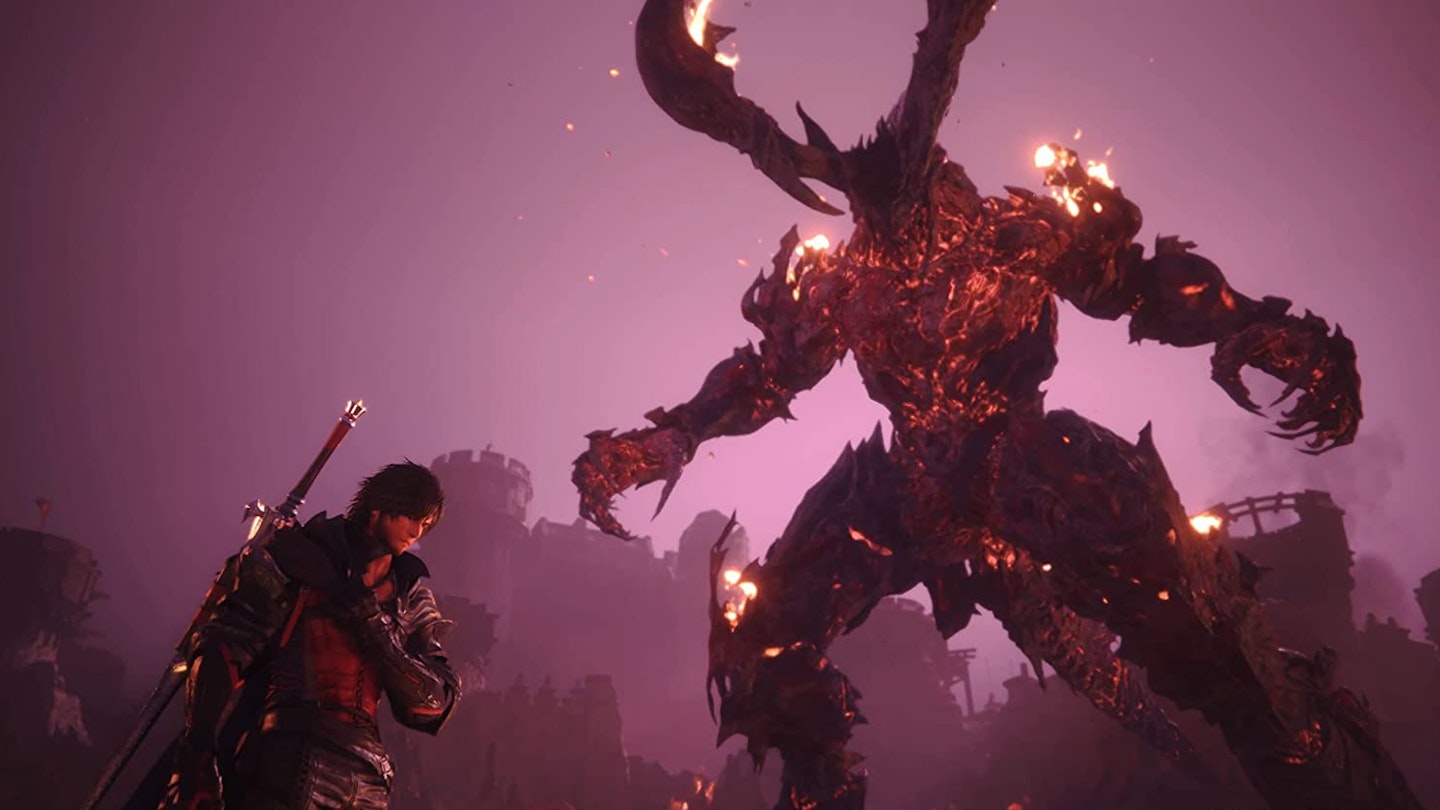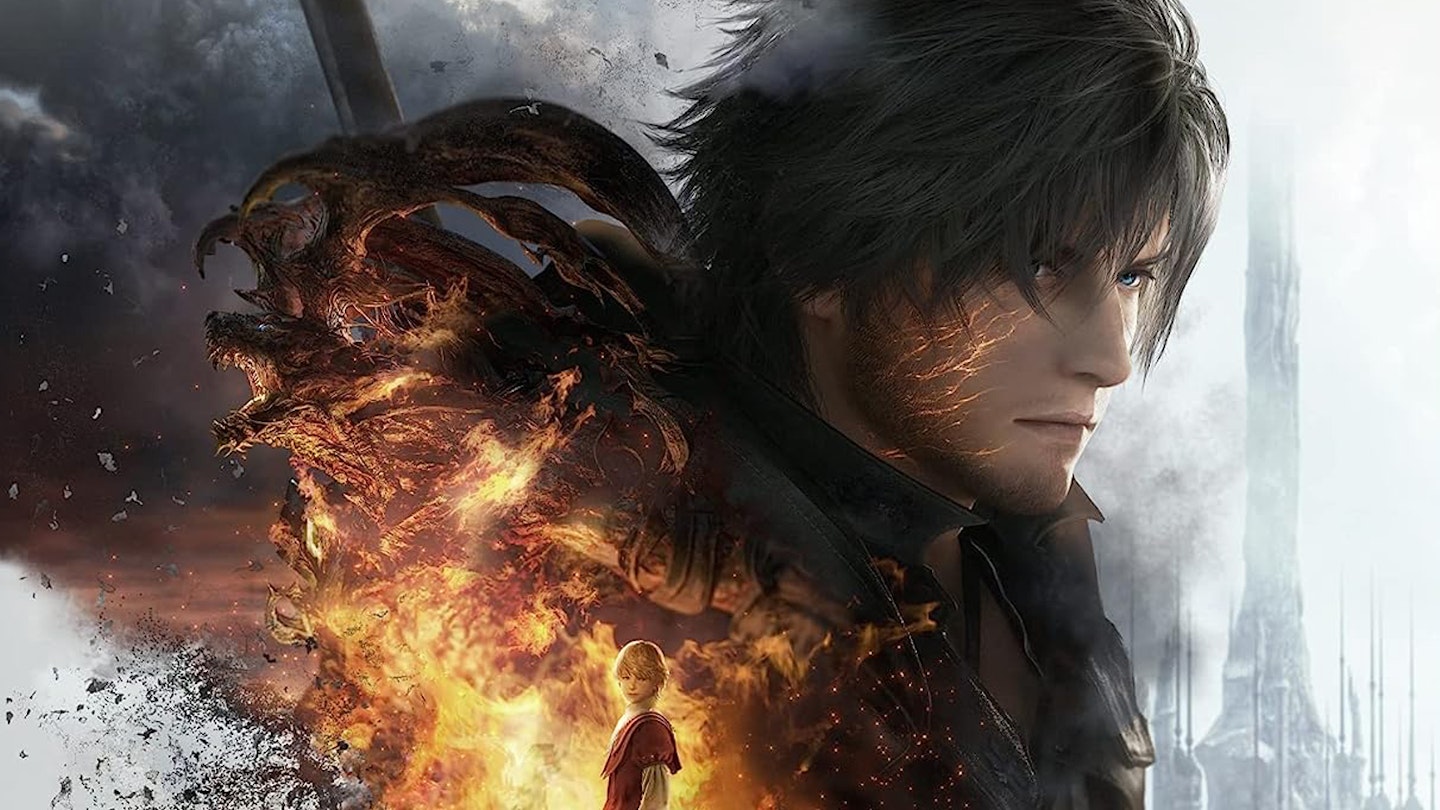Platform: PS5
Square Enix really wants you to know that Final Fantasy isn't for nerds anymore. It's a serious video game for serious people, and it's very grown up – that's why Final Fantasy XVI has so many graphic, gory deaths of random soldiers, and why so many characters drop the f-bomb now. It's why – at various points exploring the world of Valisthea as Clive Rosfield, lost scion of a noble family – you'll occasionally find recipes for, um, butchering and cooking chocobos. Safe to say the latest entry in the long running series – the first core, numbered instalment in seven years – is a bit of a departure from form, then. Yet despite the dramatically different tone, director Hiroshi Takai has ensured that the essence, the feel, of Final Fantasy ultimately remains alive and well here.
Like most of its antecedents, FF XVI is, at its core, a tale of horrifying weapons and the abuse of unchecked power, stacked against the human cost of their usage. Here, the weapons of mass destruction are the series’ familiar elemental summons, rebranded Eikons (pronounced “icons”) and used by Valisthea's nations as they vie for power and territory. The power of an Eikon is channelled by a select few known as Dominants, with Clive's young brother Joshua the Dominant of the fiery Phoenix – until a mysterious second Eikon of Fire appears, Joshua is lost, and their powerful house falls, all in one fateful night. Years later, an embittered Clive searches for vengeance, but instead finds himself at the centre of a brewing rebellion against the corrupt forces that rule the world.

If it all sounds a bit Game Of Thrones, that's probably deliberate. From the return to a high fantasy approach – this is the first single-player, numbered Final Fantasy to embrace the aesthetic since FF XII – to a voice cast filled with northern English accents and politics that map a little too closely to those of Westeros, HBO's hit series seems to be a clear influence. Clive himself is more than a little reminiscent of Jon Snow, in both design and trajectory, and there's even a gentle giant of a supporting character you'll regularly cross paths with, all shades of Samwell Tarly with a touch of Hodor. Unfortunately, even Game Of Thrones offered more onscreen diversity than this does – Valisthea is whiter than a Winterfell Christmas, the entire world seeming to lack a single person of colour, even in crowds of background characters.
It's not the first time Final Fantasy has pined after GOT though – Lena Headey and Sean Bean were both in the English voice cast for Final Fantasy XV, and Ralph Ineson (GOT's Dagmer Cleftjaw) voices major character Cid here – but it's after the show's (perceived) maturity and darkness that Square Enix seems to have most modelled FF XVI, and the shift to a more adult attitude is matched with a shift in genre. Final Fantasy XVI has all but abandoned any pretence of being a role-playing game. Sure, Clive earns experience to level up and there are plenty of stat-altering trinkets to equip him with, but these factors feel more of like concessions to the series' roots. At heart, this is an action game through and through.
The sheer spectacle is unrivalled.
Party members in the traditional Final Fantasy style are effectively an afterthought now – while Clive will occasionally be joined by others on his journey, they're entirely autonomous. These allies don't even take damage or require support, they're simply there to mop up grunts while you focus on tougher foes. The sole exception is Torgal, Clive's lupine familiar, who can be issued basic commands to attack or launch enemies into the air, or to deliver a very minor healing boost to Clive, but even this Very Good Boy is limited in his combat use.
In some ways, this has been a long time coming for Final Fantasy – in XV, the rest of your party bar protagonist Noctis were only loosely commanded, while 2014's Lightning Returns: Final Fantasy XIII also focused its combat entirely on the title character. While some may lament the change, XVI's battle system is phenomenal. Combat Director Ryota Suzuki – formerly of Capcom's Devil May Cry and Dragon's Dogma series – ensures even encounters with those aforementioned grunts are exciting, effervescent affairs. Blisteringly paced real-time combat sees Clive slashing out speedy sword attacks or channelling the power of Eikons into magic spells, zippily dodging enemy blows or leaping into the air to deliver crushing downward strikes. Battles against tougher foes involve chipping away at their Will Gauge, until they enter a stagger state allowing you to deal major damage, while boss fights are peppered with key dodges or strikes for added cinematic flair. The sheer spectacle is unrivalled, especially in some of the game's most brutal ordeals, fighting against Eikons themselves.

The battle system is such a big part of Final Fantasy XVI that the game features both a Stage Replay and an Arcade mode. These extra features allow you to repeat key sections of the game, the former to chase missed items or simply grind for experience and ability points (used to upgrade Clive's skills), the latter to earn ranked performance scores. While entirely optional, their inclusion emphasises how far this instalment moves the series into the realms of action, challenging players to pursue stylish combos and flawless performance above mere victory.
What, then, of that essence, that feel of Final Fantasy? That's found in just about everything outside of battle. It's found in the spaces it creates, with locations evocative of past entries but brought up to a near photo-real standard, and in characters with distinctive – if often outlandish – designs. It's in mechanical touches that harken back to the franchise's history, such as the return of a world map (although, in another nod to Game Of Thrones, its topography looks awfully familiar to the show's opening credits). It's in a sprawling story exploring deeper themes, and in side quests that expound upon the world and characters who inhabit it. It's in the visual language of the game, from callbacks such as a shadowy figure in a burning village evoking key moments in FF VII, to the presence of simple series stalwarts such as crystals and moogles. There are even a few modifiers for combat that enable players to drag it slightly closer to those traditional RPG roots, with equippable items such as the Ring Of Timely Evasion allowing the less action-proficient the briefest of windows to react and respond to attacks. It's not exactly the return of turn-based combat, but it is an olive branch to long-time fans.
Some of those most ardent fans may still be put off by just how much Final Fantasy XVI departs from its precursors, be it in the wholesale changes to combat and the loss of any real party to manage, or its desperate-to-be-edgy potty mouth and sometimes shocking levels of grisly violence. Yet most of the risks FF XVI takes pay off, helping to evolve and redefine what a core Final Fantasy can be. Most importantly, this is a world and story you'll want to get lost in, ultimately delivering far more emotional heft by the time the credits roll than the series has seen in years.
